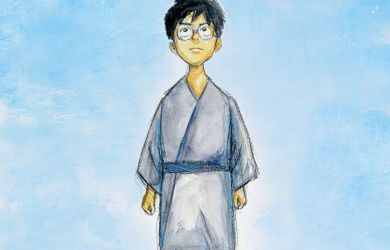
January 18, 2013
Speculative Japan 3
“Silver Bullet” and Other Tales of Japanese Science Fiction and Fantasy
By Metropolis
Originally published on metropolis.co.jp on January 2013
“The most merciful thing in the world… is the inability of the human mind to correlate all its contents,” wrote H. P. Lovecraft. Yet, in the tradition of the early 20th-century writer’s own stories, the third volume of Speculative Japan by Kurodahan Press does a good job of correlating some of the human mind’s more bizarre concoctions.
The line between Lovecraft’s “weird fiction” and the contemporary genre of “speculative fiction” is emphasized in the book’s final story “Silver Bullet,” which tells of a secret society aiming to prevent humankind from summoning Lovecraft’s mythological monsters. Far from that writer’s erudite and verbose prose, however, Yamada Masaki (translated by Stephen A. Carter) opts for a spoofy comic-noir style, which just shows how everything’s up for grabs in this cocktail mixer of genres. The mournful and the comic, the abstract and the scientific, the realistic and the caricatured, all can be found in Speculative Japan 3.
“To The Blue Star,” by Issui Ogawa is a standout—an ambitious mini space opera about a hybrid spaceship computer system—named X—representing the last remnants of human intelligence. As it wanders the universe, it encounters different life forms, interacts and evolves, all the while resisting an analysis of its own inner motivation with adolescent stubbornness:
“‘Why do you persist in this journey, in attempting to fuse with other intelligences, even at the risk of considerable injury?’
X knew all that. He’d been hurt countless times. He certainly wasn’t doing this because he enjoyed it!
‘What’s it to you? I like it this way.’”
Some ultra-short offerings have been sprinkled in for good measure. Particularly memorable is the two-page “The Warning,” by Riku Onda—supposedly written by a dog— that manages to hit both funny and chilling notes at the same time. In fact, the third volume of the series is the first to add a few pure-horror servings to the speculative platter. “A Piece of Butterfly Wing,” by Nanami Kamon, is a haunting spectral tale steeped in Japanese tradition and symbolism. The sounds and sensations of the lonely country house where Sae encounters her long-lost sister Chizu are conveyed softly and rhythmically:
“A dozen light brown butterflies were on the water. It was as though someone had arranged them there. They moved their wings up and down in a slow breath-like rhythm.
Chizu came up quietly beside Sae. The baby burped gently. Drops of milk bounced from the still bare breast. Red.”
Exposition is always a problem in a complex fantasy worlds, which is why even the master Philip K. Dick was sometimes guilty of clunky writing. In his case, the content was powerful enough to romp you over the bumpy parts. In some of the present collection it’s not, and you might find yourself skipping a few lengthy tracts of explanation sandwiched into a conversation as if it were the most natural thing in the world. But this is a collection; if you’re not enjoying one, just flick a few pages to the next.
Judging the translation is not in this review’s remit, especially as widely varying tones presumably stem from the intentions of each writer. But the Japanese culture’s influence on the process of fantasy creation is something made accessible to the international reader in this rich collection.





